Logistics
Industries
Technology & Innovations
E-commerce
E-commerce Fulfillment Services
Lease & Maintenance
Semi Trucks
Logistics
E-commerce
Lease & Maintenance
Buy Used Trucks
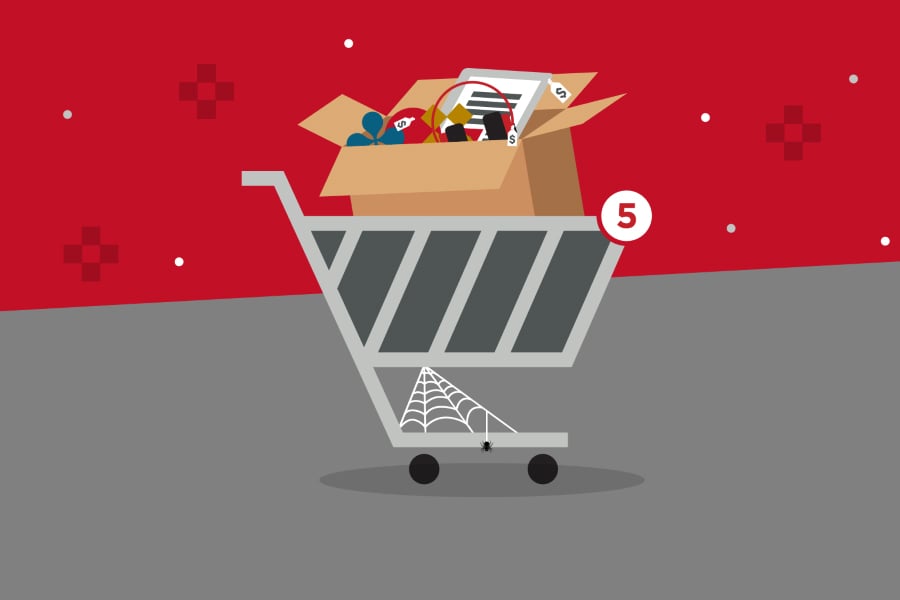
A shopper enters your website and starts browsing your product catalog. Then they start adding items to their shopping cart. So far, so good.
But instead of completing the checkout process, they exit your website without purchasing. That means no revenue for your business.
Cart abandonment, where shoppers add products to their cart and end their session without purchasing, is an all-too-common situation in ecommerce.
According to Statista, almost 80% of online shopping sessions end without a sale being made. In sum, cart abandonment results in ecommerce brands losing $18 billion in sales. Every. Single. Year.
Yes, you heard that right. $18 billion is a LOT of revenue disappearing down the drain.
So, what can you do about it? Start investing in a solid abandoned cart recovery strategy.
Abandoned cart recovery is a sales acquisition strategy where ecommerce merchants use marketing automation and UX design to convert abandoned carts into sales.
Abandoned cart recovery is a two-fold approach. First, it aims to reduce cart abandonment in the first instance by improving areas of friction in the shopping experience. Second, it follows up with almost-converted customers to persuade them to purchase items left in their shopping cart.
By making an effort to recover abandoned carts, ecommerce brands aren't just improving conversions; they're also gaining a better understanding of customer behavior.
So, is abandoned cart recovery worth the effort?
Ecommerce merchants often make the mistake of ignoring online shoppers who abandoned their carts. If they chose not to make a purchase, they didn't like the product, right?
Not necessarily.
Consumers don't throw items into their shopping cart at random. If they're choosing to put a product to put in their cart, it's because they have an interest in it.
So, while a high cart abandonment rate is disheartening, the upside is that these shoppers are identifying themselves as your strongest leads. Consumers who have abandoned carts are showing a strong intent to purchase. The problem is that something got in the way of them completing the process.
It's far more cost-effective to get this segment of shoppers over the line than to keep attracting new shoppers to your site who are not yet ready to make a purchase. Abandoned cart recovery enables you to zero in on these almost-converted customers sitting right at the bottom of your sales funnel.
By taking a two-pronged approach that focuses on pain points within the shopping experience as well as following up with consumers post-abandonment, abandoned cart recovery is a powerful revenue-generating activity for ecommerce merchants.
Before we talk about abandoned cart recovery, we need to answer the obvious question: Why do online shoppers abandon their shopping carts so often?
When it comes to combating cart abandonment, a proactive approach is far more effective than a reactive one. If you don't understand what is driving consumers to quit the shopping journey, you're going to struggle to recover abandoned carts.
Why? Because the most common reasons for cart abandonment in ecommerce are related to poor user experiences. A poor website experience adds friction to the shopping journey and undermines confidence in your brand, pushing shoppers to go elsewhere.
UX reasons for cart abandonment include:
(Don't worry: We're going to dive into these in the next section!)
If the user experience is putting off prospective customers from purchasing, there's little point in investing time and resources into more sophisticated abandoned cart recovery strategies.
If customers have been left with a poor perception of your brand, abandoned cart email campaigns or popups with coupon codes are unlikely to convert them. It's the equivalent of trying to cover up cracks in a wall with paint; it might be harder to see, but the crack is still there.
By first investing in user experience optimization, your business can tackle cart abandonment at the source. Then you can turn your attention to situations where cart recovery messaging is more likely to resonate.
After all, not all shoppers are abandoning their cart for a negative reason. Let's look at the following situations:
There are a variety of scenarios where someone has every intention to make a purchase, but circumstances outside of their control force them to end their online shopping session early.
This is why it's so important for brands to engage in abandoned cart recovery strategies that bring shoppers back to your website. Otherwise, it's like leaving money on the ground for your competitors to pick up.
By reducing shopping cart abandonment and implementing sophisticated abandoned cart recovery campaigns, your brand is much better placed to increase conversions.
Unexpected shipping costs are one of the biggest reasons for cart abandonment in ecommerce, and it's not hard to see why. Numerous studies have shown that online shoppers dislike paying for shipping. In a Shopkick survey, 94% of respondents said that free shipping was the biggest incentive to shop online during the holidays. If this isn't on the table, some consumers may choose to shop elsewhere.
Moreover, unexpected shipping costs also relate more to the quality of the shopping journey itself. After spending time browsing your online store, shoppers think they have a good understanding of what purchasing from your brand is going to cost them. Discovering hidden shipping costs creates a major point of friction in the customer journey. Some consumers may also feel like your brand is trying to mislead them into making a purchase, which creates distrust and leads to cart abandonment.
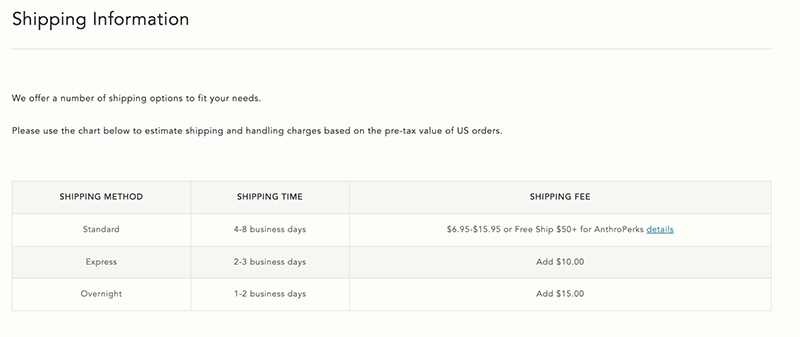
Some ecommerce merchants choose to offer a blanket free shipping policy or implement a free shipping threshold to increase average order value. To prevent shipping costs from cutting into your bottom line, it's a good idea to make free shipping an economy option, with expedited shipping methods available for an additional fee.
Whatever your business chooses to do, be transparent. Make sure that your shipping options are listed on product pages as well as the checkout page so that customers don't get a nasty surprise!
We've all been there: We've finalized our shopping cart and head to the checkout page ready to complete our purchase.
Then our heart sinks when we see the seemingly endless number of fields that need to be filled out to progress to the next stage.
The reason for making customers create an account is sound from a business standpoint. Having customers hand over details such as phone numbers and dates of birth is invaluable for retargeting purposes. However, this has to be weighed up against the rise in cart abandonment that mandatory sign-ups cause.
According to Baymard Research, 42% of consumers have abandoned their shopping cart either because they were forced to create an account or because the checkout process was too long. In fact, it's estimated that conversions can be increased by 35.62% just by optimizing the process checkout
Offering a guest checkout option will be appealing to first-time customers, while returning customers are more likely to see the value of creating an account with you. Offering both options gives your customers maximum flexibility, which keeps cart abandonment rates down.
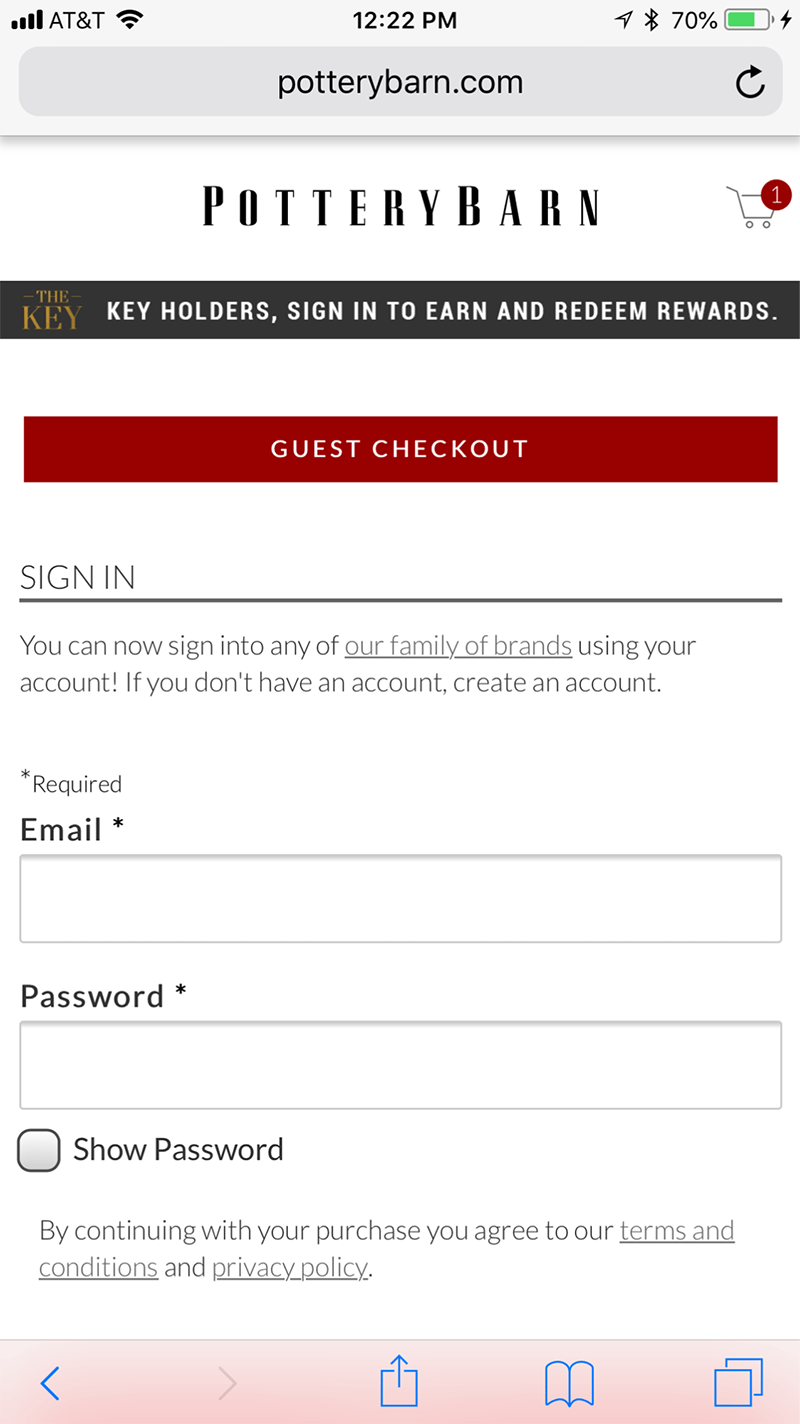
To boost account sign-ups, you need to explain to shoppers how they benefit from handing over their information.
Thanks to Amazon and other major retailers, we've seen hassle-free, no-questions-asked returns become the norm in ecommerce. Where past return policies would have required customers to make an exchange or take store credit, today's consumers aren't happy with anything less than a full refund.
This is reflected in the outsized influence that ecommerce return policies have on the customer experience. According to Oracle, 42% of consumers say that an exchange/return policy that’s overly restrictive defines a poor omnichannel shopping experience
With more consumers doing their due diligence on a retailer's return policy when shopping online, strict return policies are now responsible for 11% of all abandoned carts in ecommerce.
In sum, if a customer doesn't have confidence that a brand can handle returns quickly and efficiently, cart abandonment is close at hand. There are two parts to solving this problem. The first is creating a flexible, comprehensive return policy. But this doesn't mean that you can't have any rules governing the return process. Detailing return windows, the necessary condition for returned merchandise, and how to contact a customer representative are must-haves to reassure customers that you can manage returns effectively.
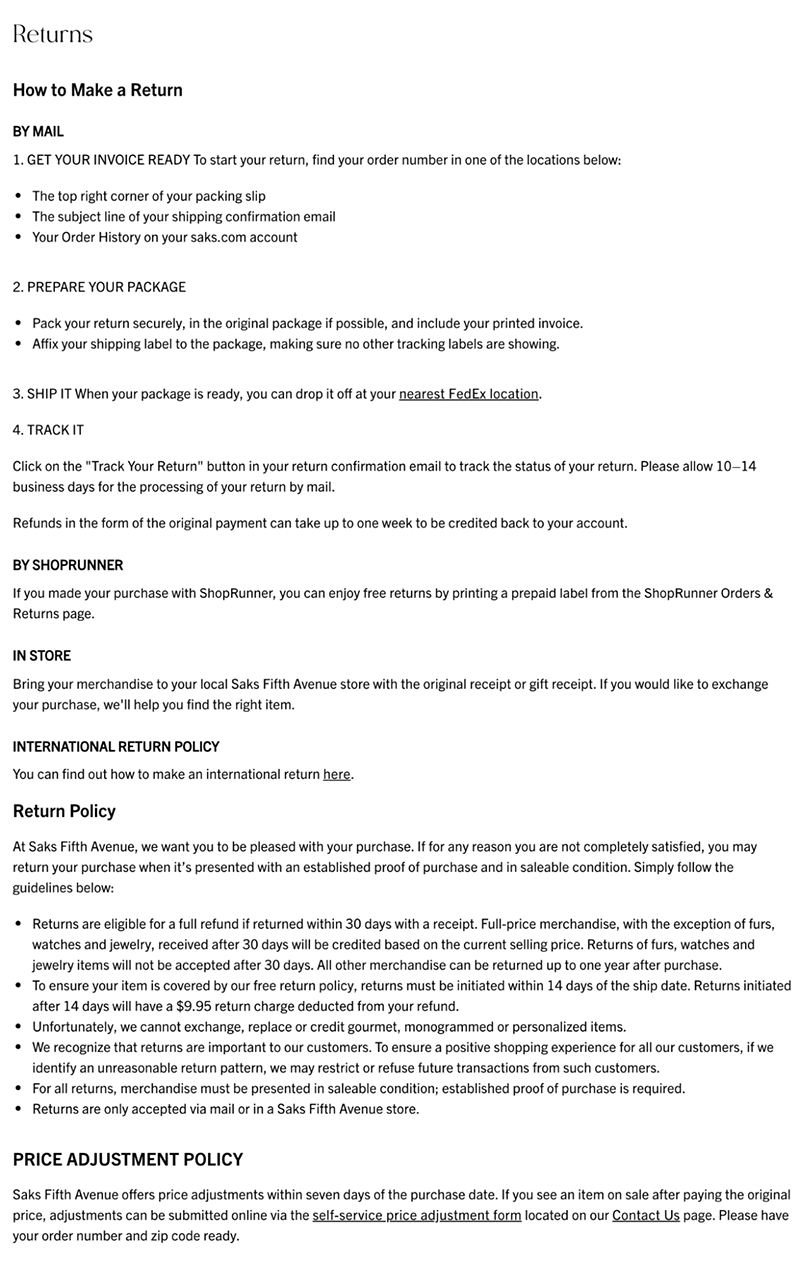
The second is ensuring that this policy is widely available across your website. Make sure that your return policy is linked in the footer of your website, at the checkout, and on your product pages. This way, your customers can make informed decisions about purchasing and cart abandonment is less likely.
There have never been more ways for customers to make payments online than in 2022. From digital wallets to cryptocurrency and Buy Now, Pay Later plans, customers increasingly expect brands to give them choice and flexibility over how they pay for their purchases.
If your customer gets to the checkout and realizes that their favored payment method isn't available, this is going to cause a lot of frustration. When it's so easy to find a virtually identical product with another vendor, many customers are happy to shop around until they find someone who offers the payment option they want.
It's been forecast that by 2024, over half of all online payments will be using digital and mobile wallets. Moreover, nearly one-fifth of consumers reported using a BNPL service to pay for all of their holiday gifts in 2021 – double the rate experienced in 2020.
So, what payment options should your brand consider? In addition to the standard credit card options, ACH payment processing and digital wallets like Apple Pay and PayPal are the bare minimum that your brand should accept. And with deferred payments growing more and more popular, it's also worth considering adding a Buy Now, Pay Later plan.
Your ecommerce website is like a busy thoroughfare where people are constantly coming and going. But despite this traffic, only a small fraction will actually go on to make a purchase.
In 2021, the average ecommerce conversion rate in the United States was just 2.8%. But if we restrict this to sessions where shoppers put items in their cart, this rises to 11.4%.
With the help of exit intent pop-ups, you can push this figure even higher.
Exit pop-ups are a type of marketing automation where website visitors are shown a compelling offer when they show the intent to leave the website. For example, if a shopper moves their cursor to the upper right-hand corner to close the tab, this will trigger a pop-up and a CTA designed to keep them on the page for longer and hopefully result in a conversion.
Exit intent pop-ups are a powerful abandoned cart recovery strategy because they are most appealing to consumers who have a strong intent to purchase but haven't got around to doing so yet. In most cases, shoppers know exactly what they want to purchase - they're just looking for that final confirmation that it's the right decision.
Imagine that you're browsing an online store and are about to exit the website and abandon your cart. Suddenly, a pop-up appears that offers you 15% off your first purchase. Faced with a genuine incentive to commit, you're much more likely to head to the checkout.
In sum, a well-delivered pop-up with the right offer is just what many shoppers need to complete the purchase. It creates that extra bit of urgency to get to the checkout while the offer is still available, helping to lower cart abandonment and increase conversions.
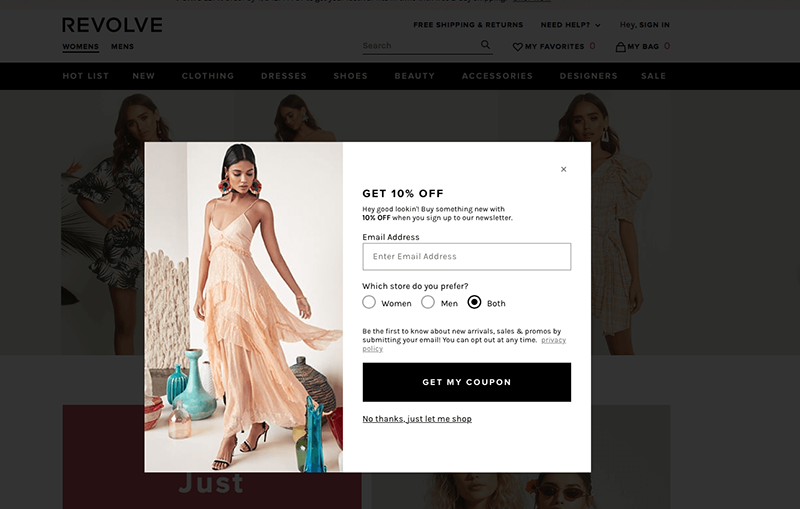
Exit intent pop-up offers can take many different forms in ecommerce, from free shipping offers and discounts to early access to your next sale. However, you need to make sure that your incentive makes sense for a particular order. Offering free shipping to a customer with a low order value, for example, is likely to result in you making a loss.
This is why exit intent pop-ups should be combined with detailed behavioral targeting to make sure you're presenting shoppers with relevant offers that have the best chance of converting. Justuno offers functionalities including advanced personalization and targeting for exit pop-ups, helping you to drive down cart abandonment rates and generate more revenue.
As we discussed above, there's a range of non-negative reasons why consumers may choose to abandon their shopping cart.
They might have every intention to purchase your product, but an unforeseen event or distraction has prevented them from doing so.
This is why giving consumers a nudge in the form of a friendly email notification can be just what some customers need to get them over the line.
Abandoned cart emails work by automatically capturing customer emails that are entered into the checkout form or review cart page - even if they exit your website without completing the process. This allows you to follow up later with a compelling subject line that entices shoppers to pick up where they left off.
Some brands may worry that abandoned cart reminders will annoy their customers and push them to unsubscribe from emails. In fact, studies show that the opposite is true. According to Listrak, emails that are sent three hours after a consumer abandons a cart see an average open rate of 40% and a click-through rate of 20%. According to Salesforce, over 17.6% of shoppers who abandoned their shopping carts returned and made a purchase soon after receiving personalized follow-up emails. This makes cart recovery emails easily some of the most successful email marketing campaigns in e-commerce.
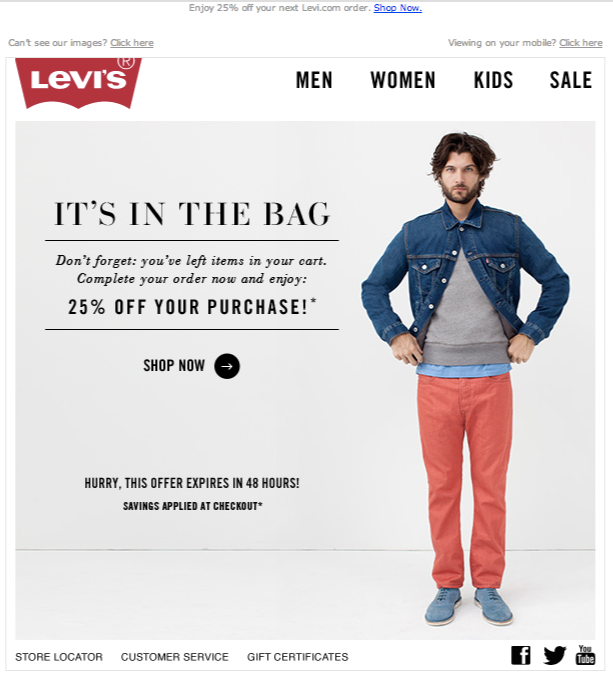
Best of all, abandoned cart emails are some of the easiest email flows to set up. Ecommerce platforms including Shopify, Woocommerce, and BigCommerce all offer merchants plugins that set up abandoned cart email templates, which trigger emails a set period of time after the customer has abandoned their cart.
To send more sophisticated cart recovery emails, such as limited-time incentives for free shipping or discount coupons, you will need to invest in more sophisticated automation software. Omnisend allows brands to pre-build abandoned cart email flows and SMS messages, making it easy to manage your cart recovery strategy in real-time.
A shopper has abandoned their cart and you've followed up with an email. Now what? Fortunately, ecommerce brands have more tools available to them to recover abandoned carts.
Retargeting ads, also known as remarketing ads, are an abandoned cart recovery strategy where ecommerce brands re-engage previous site visitors via paid advertising. Retargeting works by using browser cookies to track visitor activities and IP addresses for the purpose of showing relevant advertisements in the future.
For example, if a customer puts a pair of sneakers in their shopping cart and ends the session without purchasing, this activity can be used for retargeting purposes. The shopper can later be served with an ad on social media platforms or other web pages for the sneakers currently sitting in their shopping cart, reminding them about the item.
Retargeting ads are effective in abandoned cart recovery because, unlike most display ads, they're personalized to a shopper's activities. This is why 30% of shoppers report having a positive reaction to retargeting ads, compared with just 11% who had a negative response.
Brands can use a variety of tools to create tailored retargeting ads and segment shoppers based on their activities, including Facebook Pixel and Google RSLA. But if you're going to use retargeting ads, it's important to do it right.
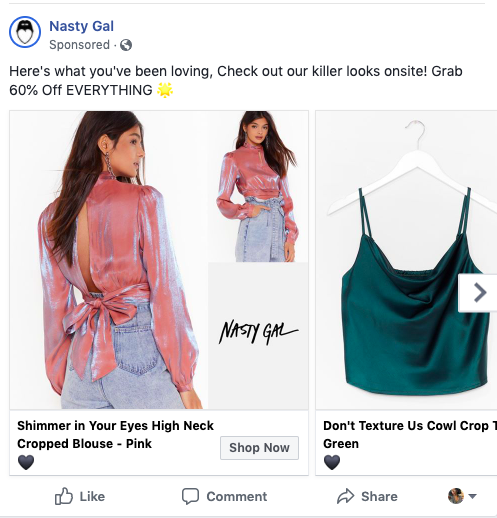
As with most forms of advertising, timing is everything with retargeting. If you start sending ads too early after cart abandonment, this comes across as aggressive and may put your customers off. But if you wait too long, those hot leads are going to grow cold.
How many of us have experienced retargeting ads following us across the web for items we purchased weeks ago? Not only is this a waste of marketing spend. Worse, it's going to annoy your customer and give the impression that your brand isn't paying attention to them. This is why you should also set a burn pixel to track when a customer has made to purchase to halt retargeting ads.
Abandoned cart recovery is about more than just pushing email reminders to your customers. It’s about building more positive shopping experiences that entice customers to spend more time on-site and make purchases. By removing key points of friction in the shopping experience, from unexpected shipping costs to long checkout processes, ecommerce merchants can reduce cart abandonment from the outset.
Once the user experience has been optimized, brands can turn their attention to post-abandonment strategies that attract shoppers back to their website to complete the purchase. By taking this two-pronged approach to abandoned cart recovery, you can keep abandonment rates down while maximizing conversions for long-term growth.